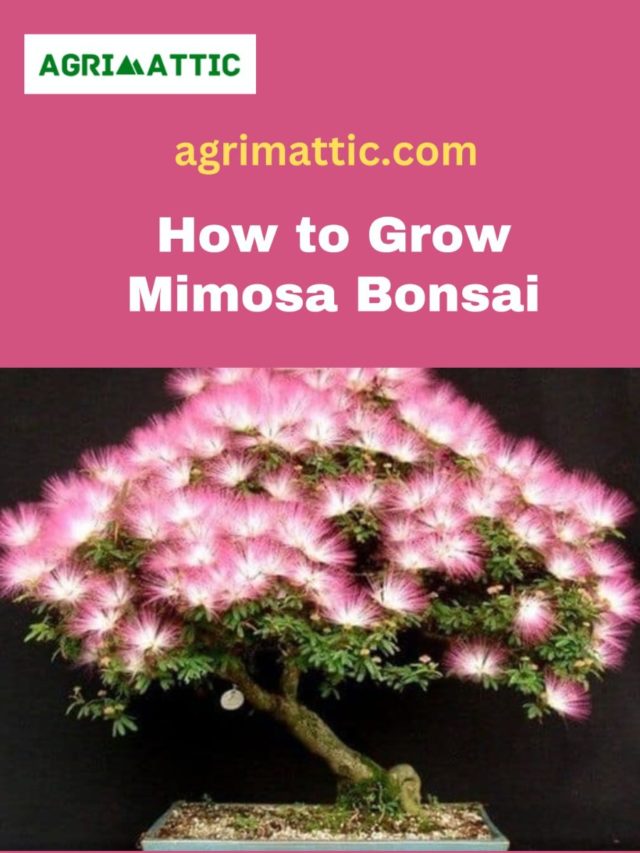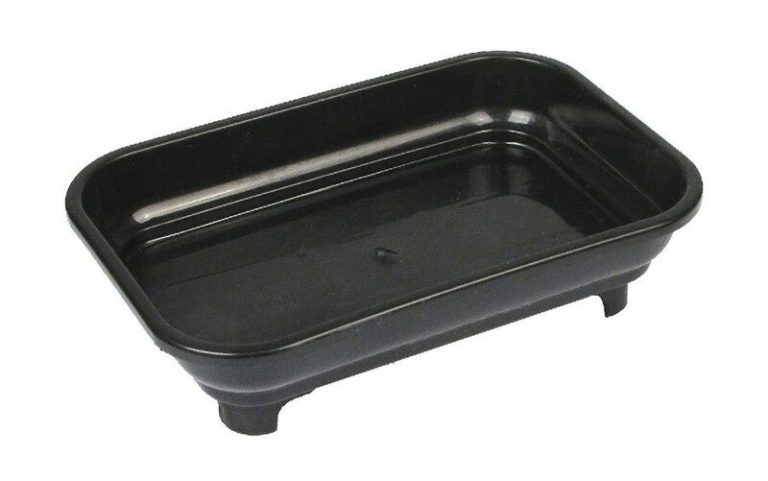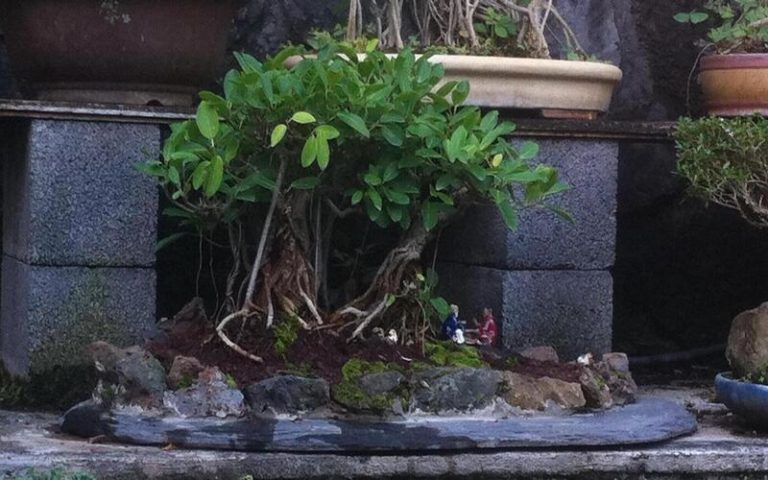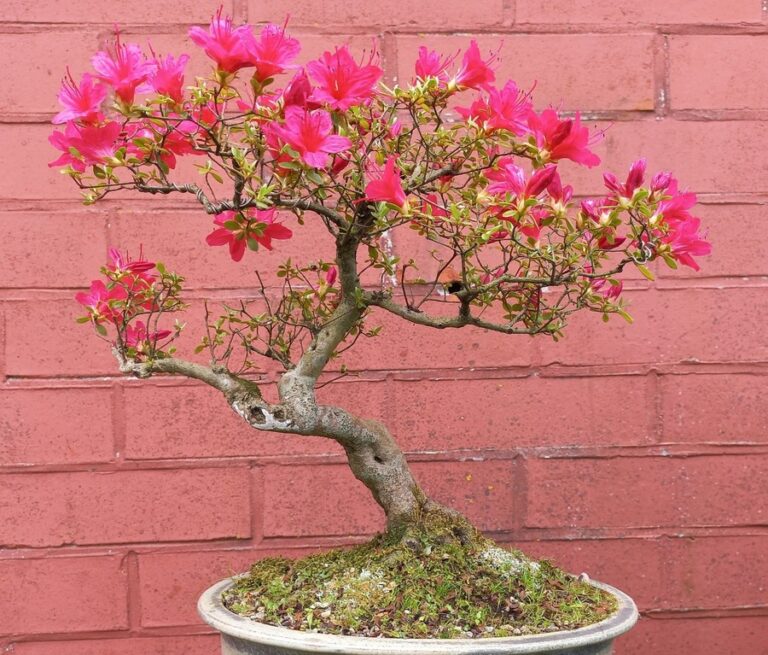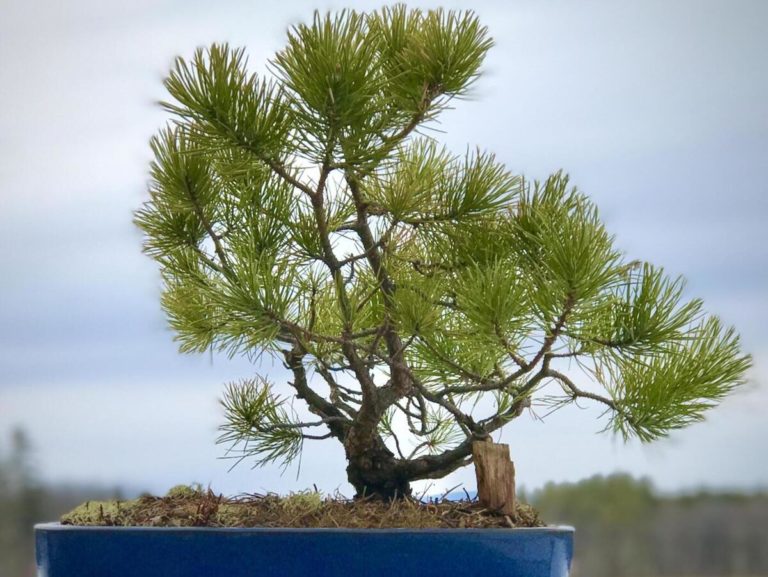Mimosa Bonsai: The Perfect Addition to Your Indoor Garden
A Mimosa bonsai is a small, planted tree or shrub that has been trained to take on a specific form or design. The art of growing miniature trees originated in China and has since extended to Japan and the rest of the globe. Mimosa bonsai is favored by bonsai enthusiasts due to its delicate foliage and attractive blossoms. This article discusses how to care for mimosa bonsai, as well as decorating techniques, popular species, and common issues to avoid.
What is Mimosa Bonsai?
Mimosa bonsai is a kind of bonsai tree developed from the plant genus Mimosa. It is a little tree with fern-like leaves and bright, fluffy blooms in pink, purple, and white. Mimosa bonsai are admired for their delicate beauty and are frequently produced as decorative plants. Mimosa bonsai must be trimmed and shaped on a regular basis to attain the desired aesthetic, and it requires special care in terms of lighting, watering, soil, and fertilization. Different species of mimosa, each with its own distinct qualities and features, can be utilized for bonsai. Mimosa bonsai, with appropriate care and attention, can be a magnificent addition to any house or garden.
Types of Mimosa Bonsai
There are several mimosa bonsai varieties that may be cultivated, and each has its own own qualities and traits. The following are some of the most well-liked varieties of mimosa bonsai:
Mimosa pudica: Also known as the “sensitive plant,” mimosa pudica is a small shrub that is known for its responsive leaves that close when touched. It produces pink, fluffy flowers and is a popular choice for bonsai enthusiasts.
Mimosa hostilis: This South American tree is notable for its vivid green foliage and exquisite pink blossoms. It is a hardy plant that requires little maintenance.
Mimosa tenuiflora: Also known as the “jurema” tree, mimosa tenuiflora is a small tree that is native to Brazil. It produces beautiful, pink flowers and is prized for its medicinal properties.
Mimosa strigillosa: This North American shrub is notable for its petite, pink blooms and delicate foliage. It is a tough species that is ideal for bonsai gardening.
Mimosa pigra: This tree is native to Australia and produces pink, spherical flowers. It can grow quite tall, but can also be pruned and trained into a bonsai form.
These are just a few examples of the types of mimosa bonsai that can be grown. Each species offers its own unique beauty and requires specific care to thrive as a bonsai.
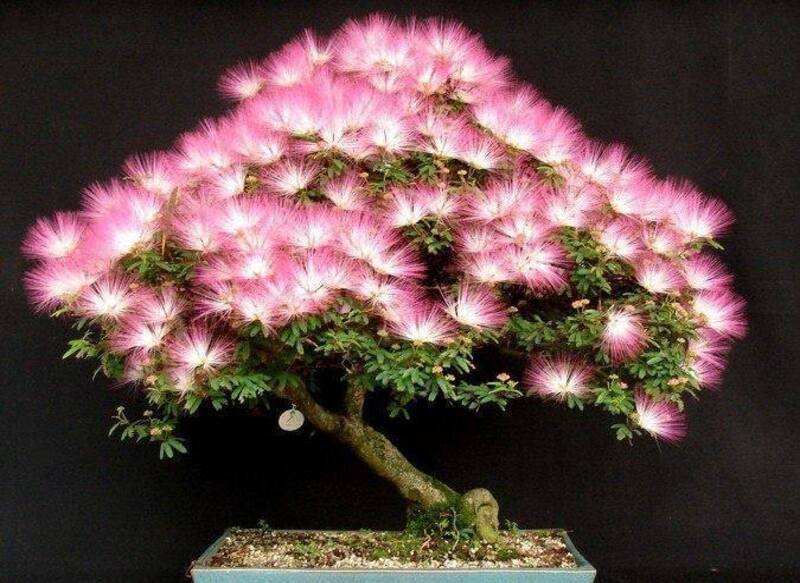
Mimosa Bonsai and Its Symbolism
Mimosa bonsai, like many other bonsai plants, has symbolic and cultural importance in many cultures. Bonsai is connected with patience, discipline, and harmony with nature in Japanese culture. Because of its delicate leaves and fluffy blossoms, mimosa bonsai is viewed as a sign of femininity, elegance, and sensitivity.
The mimosa is frequently associated in the language of flowers with sensitivity and covert affection. As a means to convey these feelings, Mimosa bonsai can be gifted to a loved one. It can also be used as a decoration for marriages and anniversaries to represent love and affection.
The mimosa is frequently associated with sensitivity and covert love in the language of flowers. As a means to express these sentiments, one can present a loved one with a Mimosa bonsai. It can also be used as a decoration for marriages and anniversaries to symbolize love and affection.
In general, the mimosa bonsai represents elegance, sensitivity, and healing. It can be a thoughtful present or a decorative element in the home or garden, serving as a reminder of the significance of patience and harmony with nature.
Characteristics of Mimosa Bonsai
Mimosa bonsai is distinguished from other varieties of bonsai trees by several distinctive characteristics. Here are several distinguishing characteristics of mimosa bonsai:
- Leaves: Mimosa bonsai has fern-like leaves that are delicate and often sensitive to touch. The leaves are usually a bright green color and can create a beautiful contrast against the tree’s vibrant flowers.
- Flowers: The mimosa bonsai’s most unique characteristic is its blossoms. They have fluffy, vivid, pink, purple, and white coloring. The blooming of the flowers, which offer a splash of color to any house or garden, normally occurs in the spring and summer.
- Trunk: The trunk of the mimosa bonsai is often thin and delicate, giving the tree an elegant and graceful appearance. With proper pruning and shaping, the trunk can be trained to create unique and interesting shapes.
- Bark: Mimosa bonsai has smooth, thin bark that is often a light brown or gray color. The bark can add texture and visual interest to the tree, especially when it is older.
- Size: Mimosa bonsai is a relatively small tree, typically reaching heights of 1-2 feet at maturity. This makes it an excellent option for indoor bonsai cultivation or for those with restricted outdoor space.
Overall, a mimosa bonsai is a delicate and beautiful tree with fern-like leaves, colorful flowers, and a thin trunk. It is a prized addition to any bonsai collection and needs special care and attention to grow.
How to Grow Mimosa Bonsai?
Growing mimosa bonsai can be a satisfying and fun experience for both newbies and experts. Here are some general guidelines for growing mimosa bonsai:
Choose the right pot: Growing mimosa bonsai can be a satisfying and fun experience for both newbies and experts. Here are some general guidelines for growing mimosa bonsai:
Soil: Mimosa bonsai prefers well-draining, slightly acidic soil. A mix of peat moss, perlite, and sand can create an ideal soil blend for mimosa bonsai.
Watering: Mimosa bonsai should be watered when the top layer of soil is dry to the touch. Be sure not to over-water, as this can cause root rot.
Sunlight: Mimosa bonsai prefers bright, indirect sunlight. Place the tree near a window or outdoors in a spot that receives partial shade.
Fertilizer: Mimosa bonsai should be fertilized regularly during the growing season with a balanced, water-soluble fertilizer.
Pruning: Mimosa bonsai should be pruned regularly to maintain its shape and promote healthy growth. Prune in the early spring before new growth begins.
Repotting: Mimosa bonsai should be repotted every 2-3 years to ensure healthy growth. Repot in the early spring before new growth begins.
Pests and diseases: Pests like spider mites and mealybugs can attack Mimosa bonsai. Use the right pesticides right away to take care of bugs. Don’t water too much because it can cause root rot and other diseases.
Overall, growing mimosa bonsai takes care, attention to detail, and a love of nature. If you give your mimosa bonsai the right care, it can grow and become a beautiful part of your home or yard.
Benefit of Mimosa Bonsai
Mimosa bonsai offers a range of benefits, both aesthetic and practical. Here are some of the key benefits of growing mimosa bonsai:
- Aesthetic appeal: Mimosa bonsai is a beautiful and unique tree that can add a splash of color and visual interest to any home or yard. The bright flowers and leaves that look like ferns make the plant look beautiful and delicate.
- Indoor air quality: Mimosa bonsai, like many other plants, can help clean the air inside by removing dangerous pollutants. This can make the place where people live safer and more comfortable.
- Stress relief: Taking care of a bonsai tree like a mimosa bonsai can be a calming and peaceful activity. It can help you feel less stressed and more calm and healthy.
- Educational value: Growing and caring for mimosa bonsai can be an educational experience, especially for children. It can teach important lessons about the natural world and the importance of responsible stewardship.
- Economic value: In some parts of the world, mimosa bonsai is grown commercially for its ornamental value. This can provide a source of income and economic benefit to growers and producers.
Overall, mimosa bonsai has many benefits and is a great addition to any home or yard. Mimosa bonsai is a great choice if you want to improve the air quality inside, relieve stress, or just enjoy the beauty of nature.
Styling and Design of Mimosa Bonsai
Styling and designing mimosa bonsai is an important aspect of bonsai cultivation. Here are some tips for styling and designing mimosa bonsai:
Choose a style: Mimosa bonsai can be styled in a variety of ways, including formal upright, informal upright, slanting, and cascade. Choose a style that complements the natural characteristics of the tree and fits with your personal taste.
Consider the trunk: The trunk is a key element of mimosa bonsai design. It should be straight, tapered, and have a natural flow. Use wire to gently shape the trunk as needed.
Branch placement: The branches of mimosa bonsai should be placed in a way that creates a balanced and harmonious design. The lower branches should be thicker and longer than the upper branches to create the illusion of age.
Pruning: Regular pruning is essential for maintaining the shape and design of mimosa bonsai. Prune in the early spring before new growth begins, and use sharp pruning shears to make clean cuts.
Wiring: Wiring can be used to shape and style the branches of mimosa bonsai. Use flexible aluminum or copper wire, and be careful not to apply too much pressure to avoid damaging the branches.
Pot selection: The pot should complement the design and style of the mimosa bonsai. Choose a pot that is slightly larger than the root system, and consider the color and shape of the pot when designing the tree.
Overall, styling and developing mimosa bonsai takes care, attention to detail, and a good eye for design. With the right care and styling, your mimosa bonsai can turn into a beautiful piece of art that adds value and beauty to your home or yard.
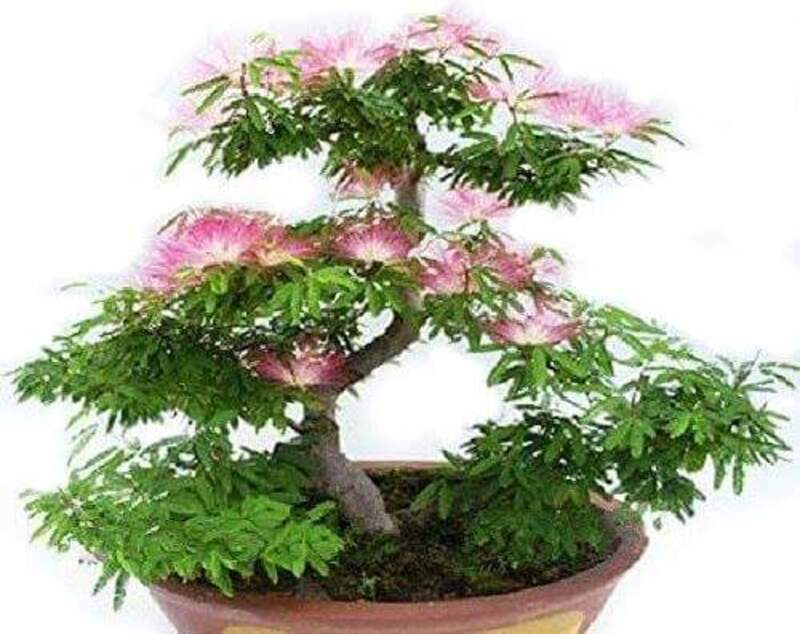
How to Care and Maintain Mimosa Bonsai?
Proper care and maintenance are essential for the health and longevity of mimosa bonsai. Here are some tips for caring and maintaining your mimosa bonsai:
- Watering: Mimosa bonsai needs to be watered regularly and consistently. Water when the dirt feels a little dry to the touch, but don’t water too much or the roots will die. If you don’t want to damage the tree or disturb the dirt, use a watering can with a small nozzle.
- Fertilizing: Fertilize mimosa bonsai during the growing season with a balanced fertilizer. Follow the instructions on the package and avoid overfertilization, which can damage the roots.
- Pruning: Regular pruning is essential for maintaining the shape and health of mimosa bonsai. Prune in the early spring before new growth begins, and use sharp pruning shears to make clean cuts. Remove any dead or damaged branches, and trim back any branches that are growing too long or out of shape.
- Repotting: Mimosa bonsai should be repotted every 2-3 years to ensure healthy growth and root development. Repot in early spring before new growth begins, and use a well-draining soil mix that is appropriate for bonsai cultivation. Be careful not to damage the root system when repotting, and use a pot that is slightly larger than the current pot.
- Temperature and humidity: Mimosa bonsai prefers warm temperatures and high humidity. Keep the tree in a warm, bright location and avoid exposing it to drafts or extreme temperature changes. Use a humidity tray or a misting bottle to increase humidity levels.
- Pest and disease control: Keep an eye out for aphids, mites, and scale insects, which are common bonsai bugs. Use the right poison or pesticide to get rid of pests or diseases.
You can keep your mimosa bonsai healthy and vibrant for years by following these care and maintenance guidelines.
Mimosa Bonsai Care Sheet
| Aspect | Care Tips |
| Watering | When the dirt feels a little dry to the touch, you should water it. Avoid overwatering to avoid root rot. Use a watering can with a small hole in the top. |
| Fertilizing | Use a balanced fertilizer during the growing season. Follow instructions on the package and avoid overfertilizing. |
| Pruning | Before spring growth, prune regularly. Cut cleanly with sharp pruning shears. Trim any overgrown or dead branches. |
| Repotting | Repot every 2-3 years in early spring before fresh growth. Use well-draining soil and avoid root damage. Use a little bigger pot. |
| Temperature | Avoid drafts and excessive temperatures. Mimosa bonsai likes heat and humidity. |
| Pest and Disease Control | Aphids, mites, and scale insects can damage bonsai. Control pests and diseases using a suitable pesticide or fungicide. |
By following these care tips, you can ensure that your mimosa bonsai remains healthy and beautiful for years to come.
Conclusion:
Mimosa bonsai is a beautiful, delicate plant that can be a joy to grow and care for. By following the tips for lighting, feeding, soil, fertilizer, and trimming, you can help your mimosa bonsai grow and take on the shape or style you want. Traditional bonsai styles can be used on mimosa bonsai, and each species has its own special qualities.
FAQ:
Q: What is mimosa bonsai?
A: Mimosa bonsai is a miniature version of the mimosa tree, popular for its delicate foliage and pink flowers.
Q: What are the characteristics of mimosa bonsai?
A: Mimosa bonsai have small, fern-like leaves and produce pink, fluffy flowers. They’re easy to care for and can be trained into various shapes and styles.
Q: How do I care for my mimosa bonsai?
A: To take care of a plant, you need to water, fertilize, prune, and repot it regularly. They like warm, sunny places with dirt that drains well. Aphids, mites, and white mildew are some of the most common pests and illnesses.
Q: How long does it take for mimosa bonsai to grow?
A: Growth rate varies, but with proper care, they can grow several inches per year.
Q: Can I keep my mimosa bonsai indoors?
A: Yes, as long as it’s kept in a warm, bright location and not exposed to drafts or extreme temperature changes.
Q: What is the symbolism behind mimosa bonsai?
A: It’s associated with femininity, sensitivity, and beauty. In some cultures, the mimosa flower represents friendship and love.
Q: How do I style and design my mimosa bonsai?
A: Styling involves careful pruning for balance, emphasizing natural growth patterns through wiring and training techniques.
Also Read:


